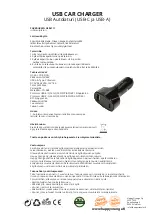
Co de 39
Nugget
Operating the Terminal in a Network
4-17
4
configuration command
is the reader or configuration command or commands
you want to set on the terminal, or get the current value
of from the terminal. To save configuration changes in
flash memory, send the reader command
.+1
as the last
command.
For a list of commands, see Chapter 8, “Reader
Command Reference,” or Chapter 9, “Configuration
Command Reference.”
EOM
is the end of message field.
Note: To send data to an application instead of sending configuration commands,
use the letter
A
followed by a space in the TMF field. If the TMF field does not
contain CG, Cg, CS, Cs, or A , the terminal ignores the transaction.
Example with TMF
In the host application, you want to set the value for two configuration commands on the
terminal. Send this transaction from the host application:
CS$+B1
Note: SOM and EOM are not shown in this example.
where:
CS
is a TMF Configuration Set request.
$+
is the Change Configuration reader command.
BV4
sets the Beep Volume configuration command to a value of 4, which is a very
loud beep volume.
DF30
sets the Display Backlight Timeout configuration command to a value of 30
seconds.
.+1
is the reader command that saves configuration changes to the terminal’s flash
memory.
The terminal returns this transaction to the host application.
Cs$+B1
where:
Cs
is a TMF Configuration Set response.
$+
is the Change Configuration reader command.
BV4
means the Beep Volume configuration command has been changed to a value of
4, which is a very loud beep volume.
DF30
means the Display Backlight Timeout configuration command has been
changed to a value of 30 seconds.
.+1
means the configuration changes have been saved in flash memory.
Summary of Contents for Trakker Antares 2420
Page 1: ...TRAKKERAntares 2420and2425 Hand HeldTerminal P N 064024 006 User s Manual...
Page 15: ...nuggetf code39 Contents xv Glossary Index G I...
Page 16: ...xvi...
Page 24: ...xxiv...
Page 25: ...nuggetf code39 Getting Started 1...
Page 26: ...1 2...
Page 60: ...1 36...
Page 61: ...Learning How to Use the Terminal 2...
Page 62: ...2 2...
Page 103: ...Co de 39 Nugget Configuring the Terminal 3...
Page 104: ...Co de 39 Nugget 3 2...
Page 134: ...3 32...
Page 135: ...Operating the Terminal in a Network 4...
Page 136: ...4 2...
Page 173: ...Using Custom Applications 5...
Page 174: ...5 2...
Page 193: ...Troubleshooting 6...
Page 194: ...6 2...
Page 219: ...Running Diagnostics 7...
Page 220: ...7 2...
Page 243: ...Reader Command Reference 8...
Page 244: ...8 2...
Page 268: ...8 26...
Page 269: ...Configuration Command Reference 9...
Page 270: ...9 2...
Page 389: ...Terminal Specifications A...
Page 390: ...A 2...
Page 404: ...A 16...
Page 405: ...Full ASCII Charts B...
Page 406: ...B 2...
Page 415: ...International Character Support C...
Page 416: ...C 2...
Page 427: ...Using the Default Applications D...
Page 428: ...D 2...
Page 438: ...D 12...
Page 439: ...Glossary G...
Page 440: ...G 2...
Page 463: ...Index I...
Page 464: ...I 2...
Page 480: ...I 18...
















































